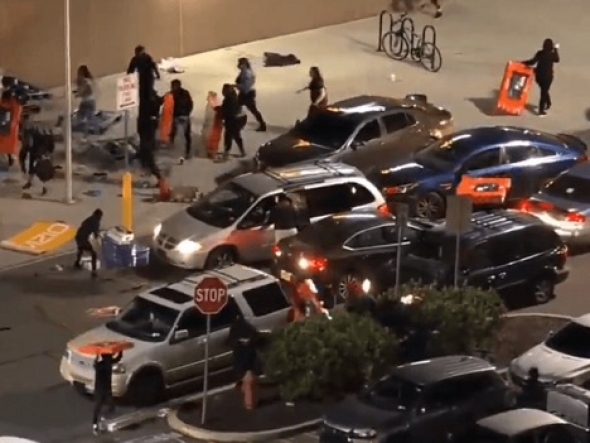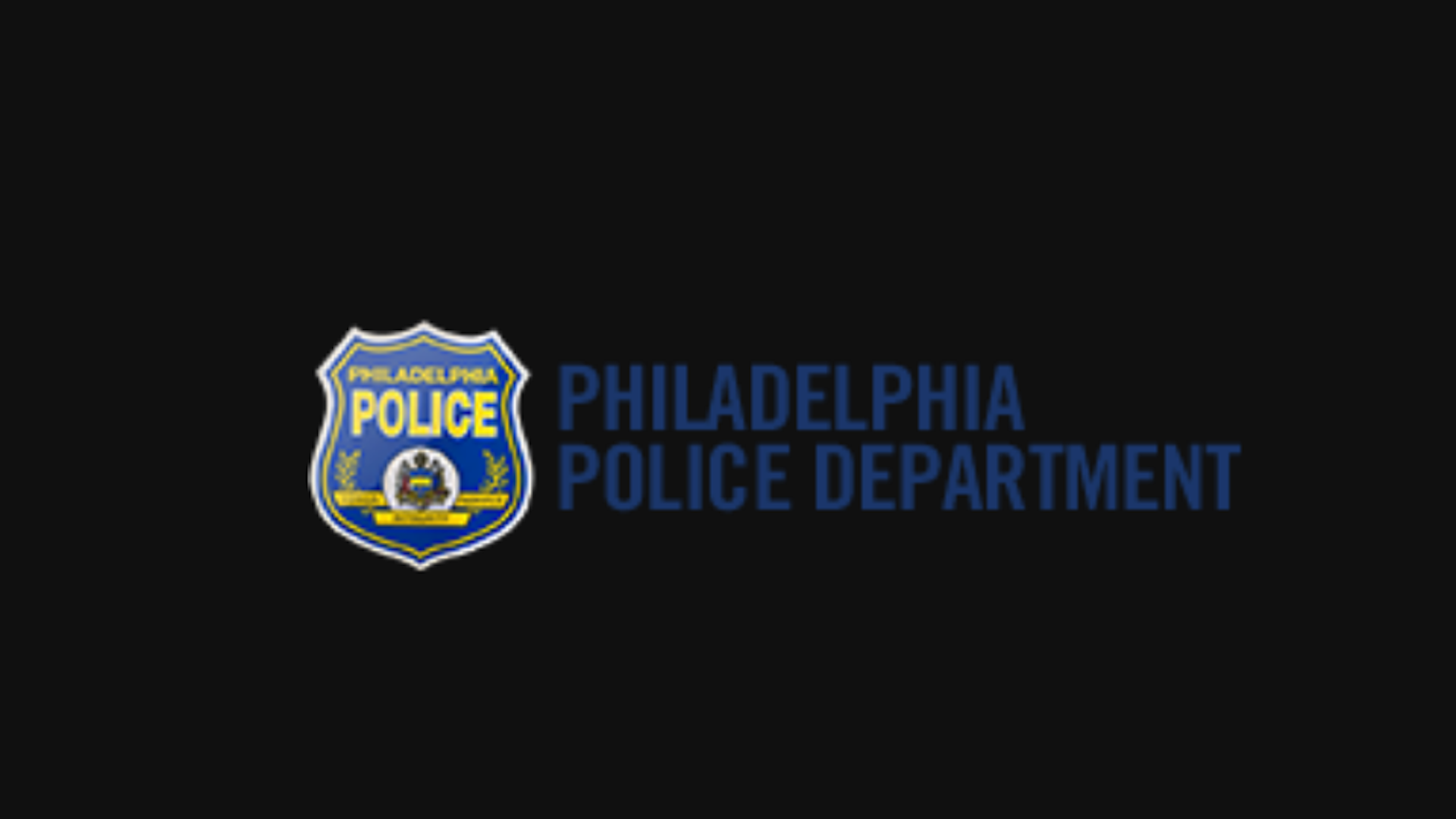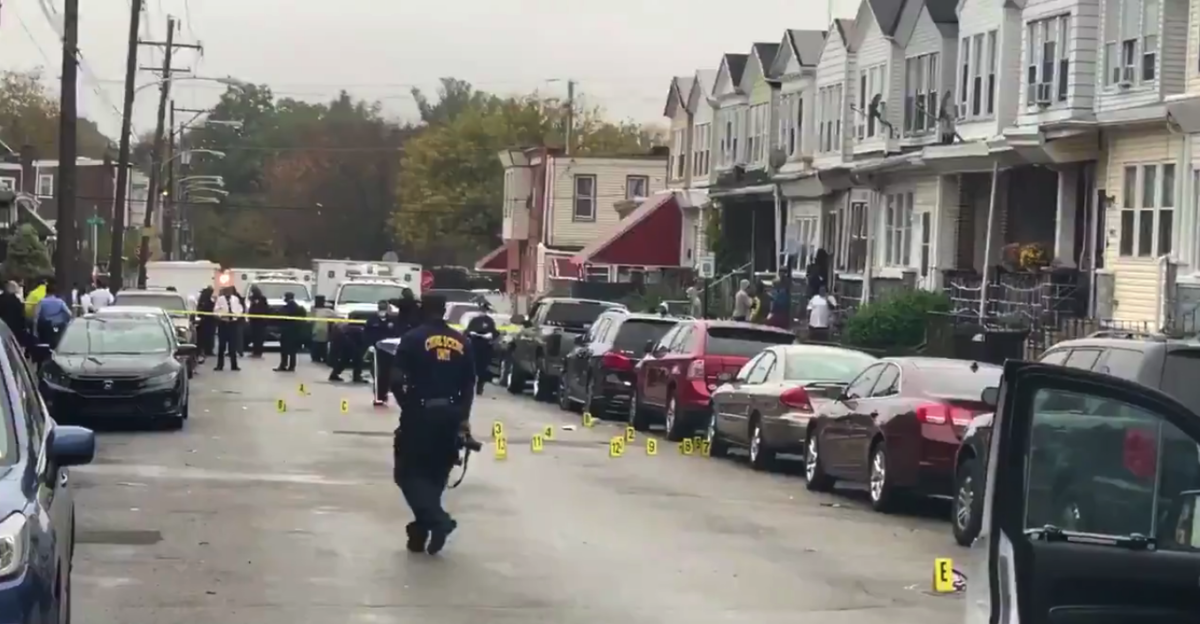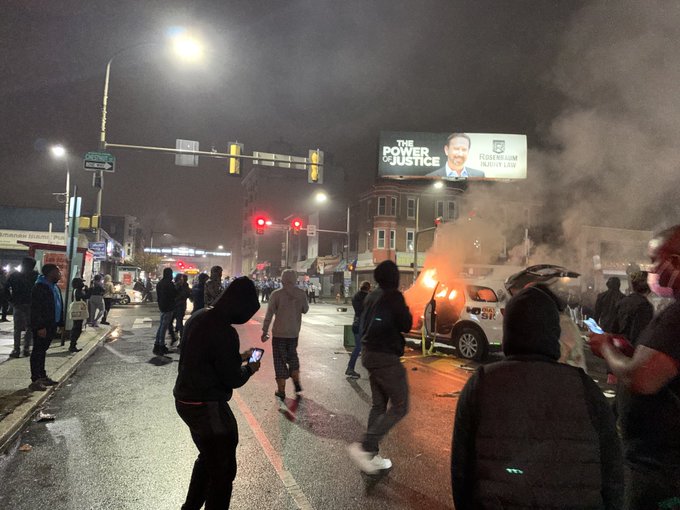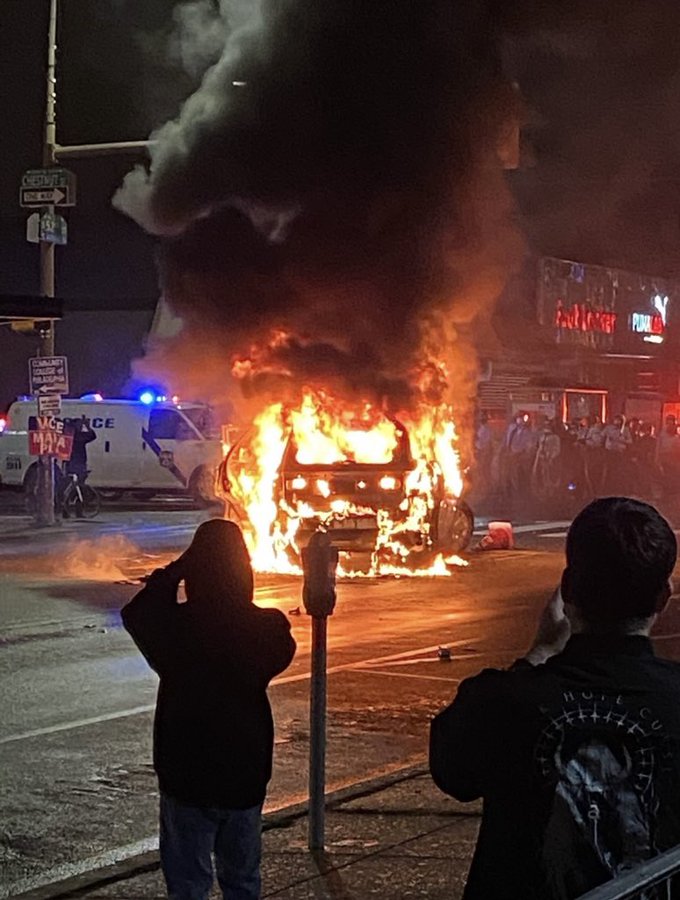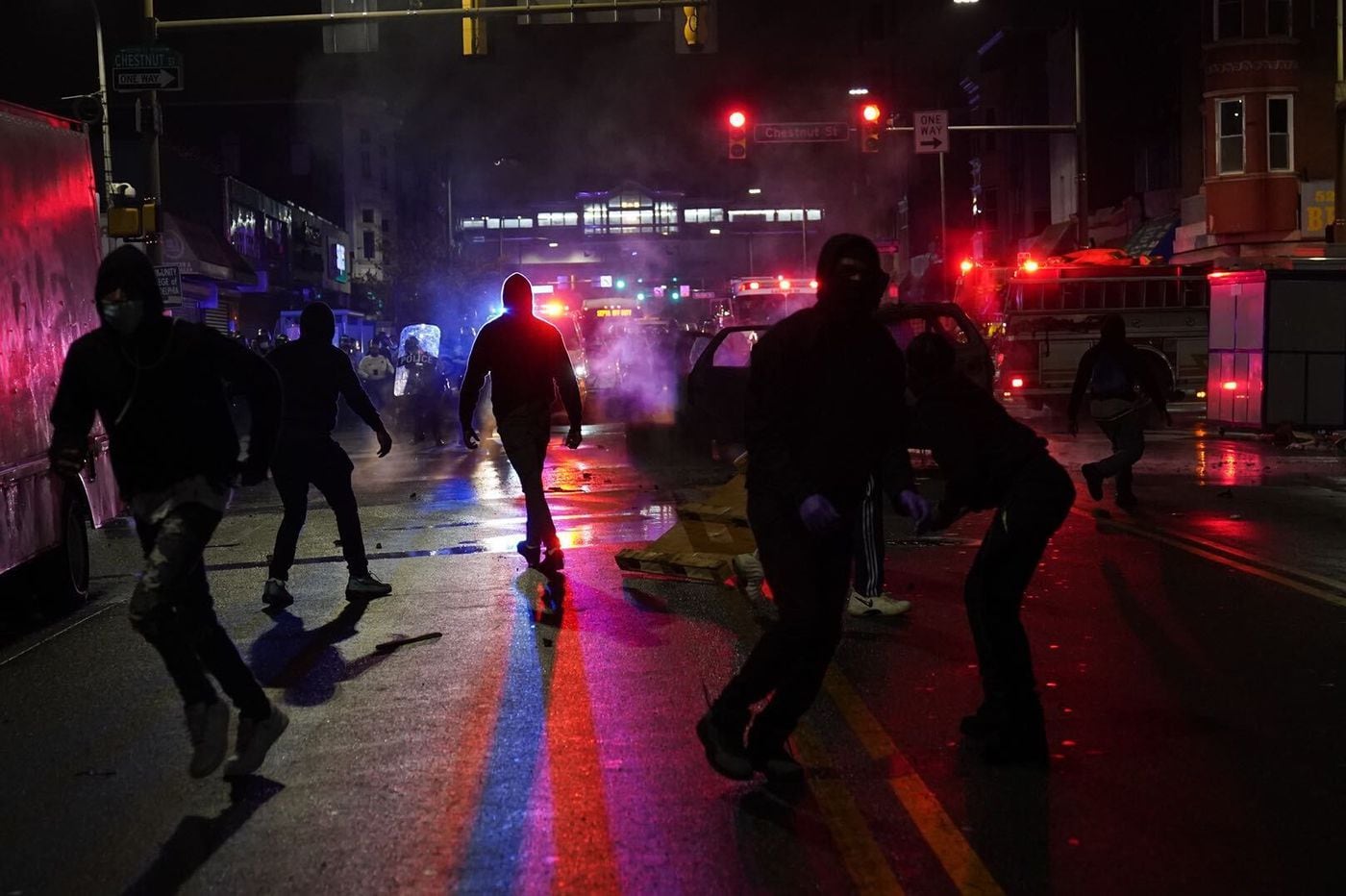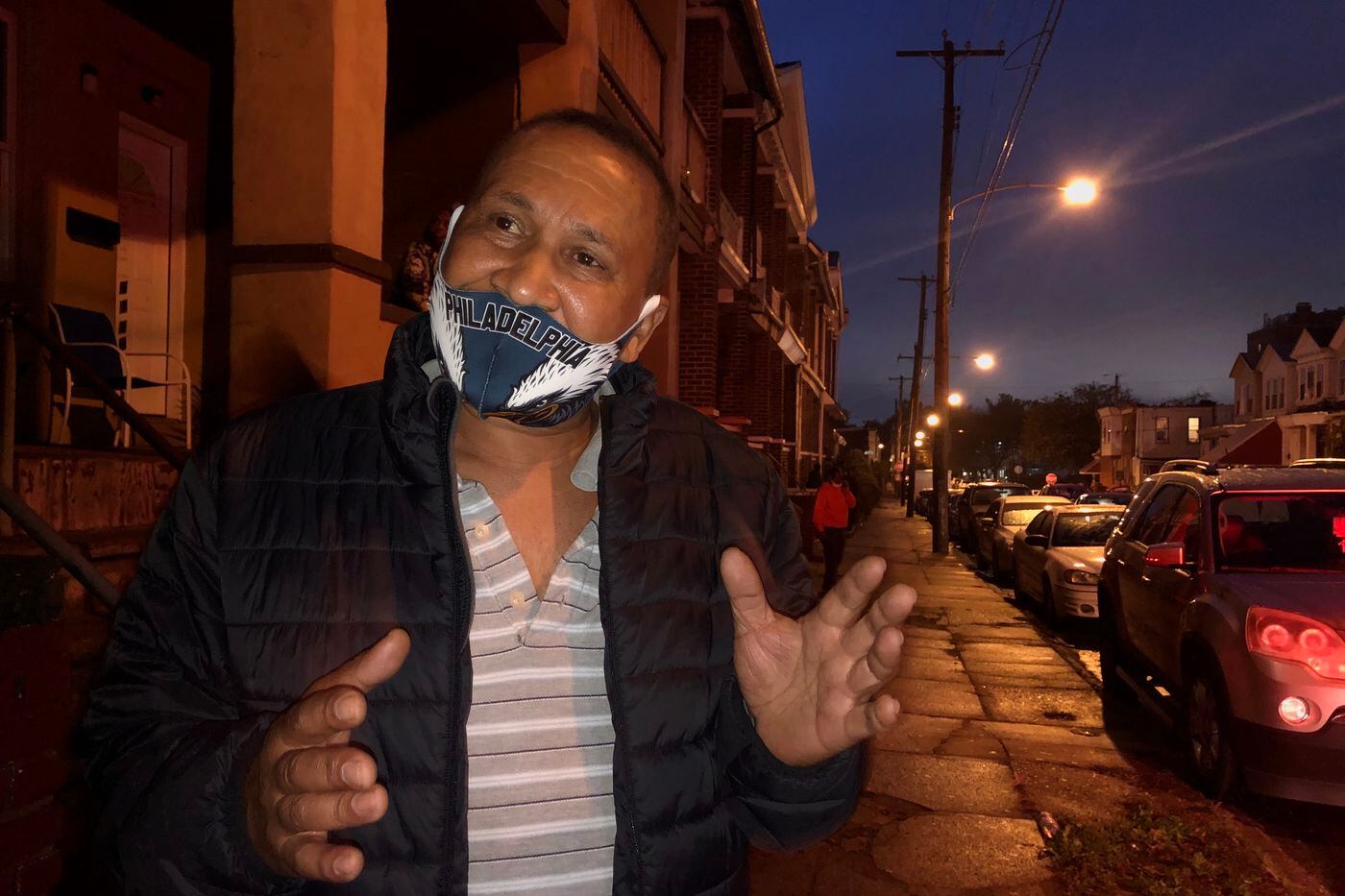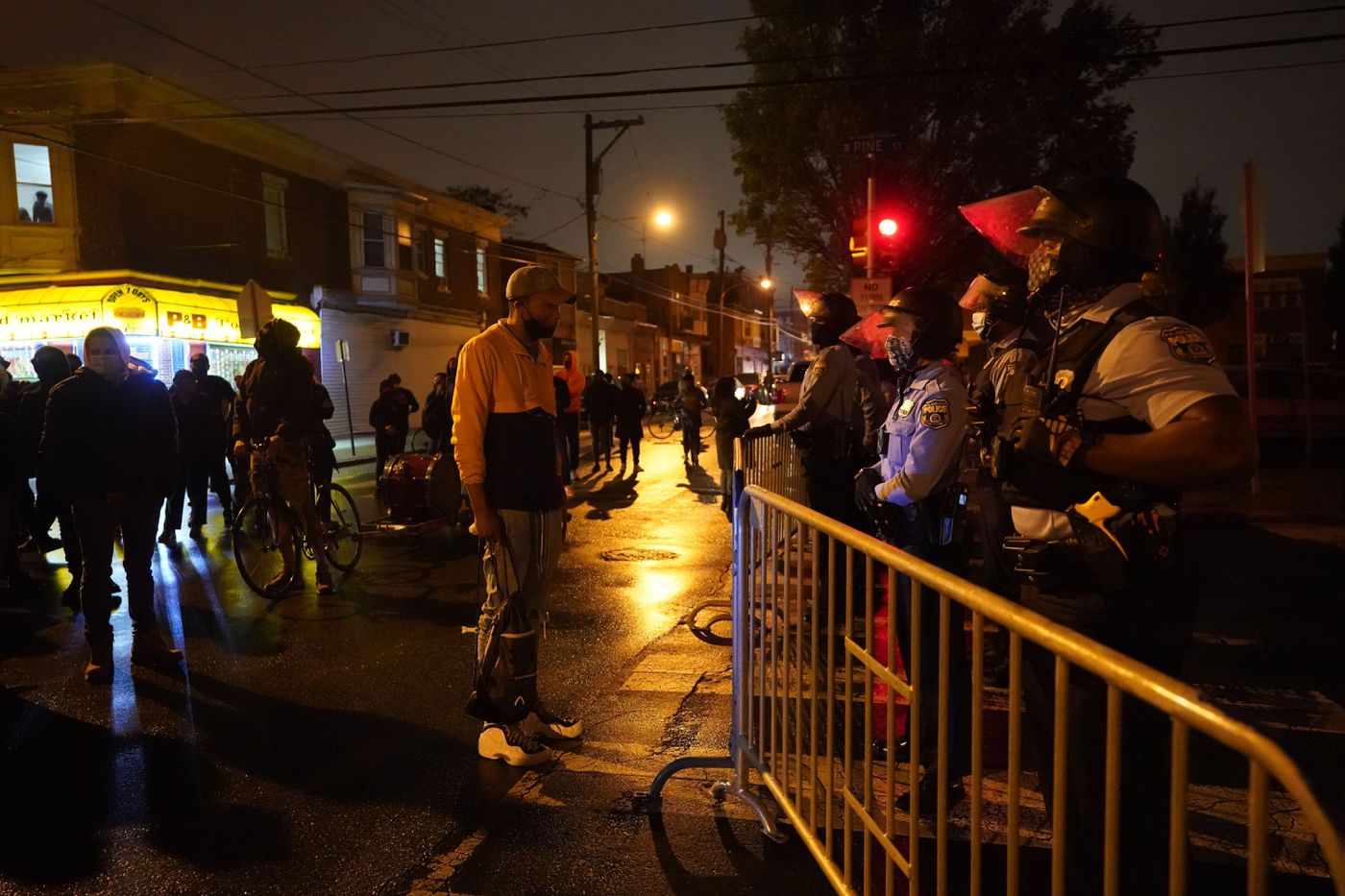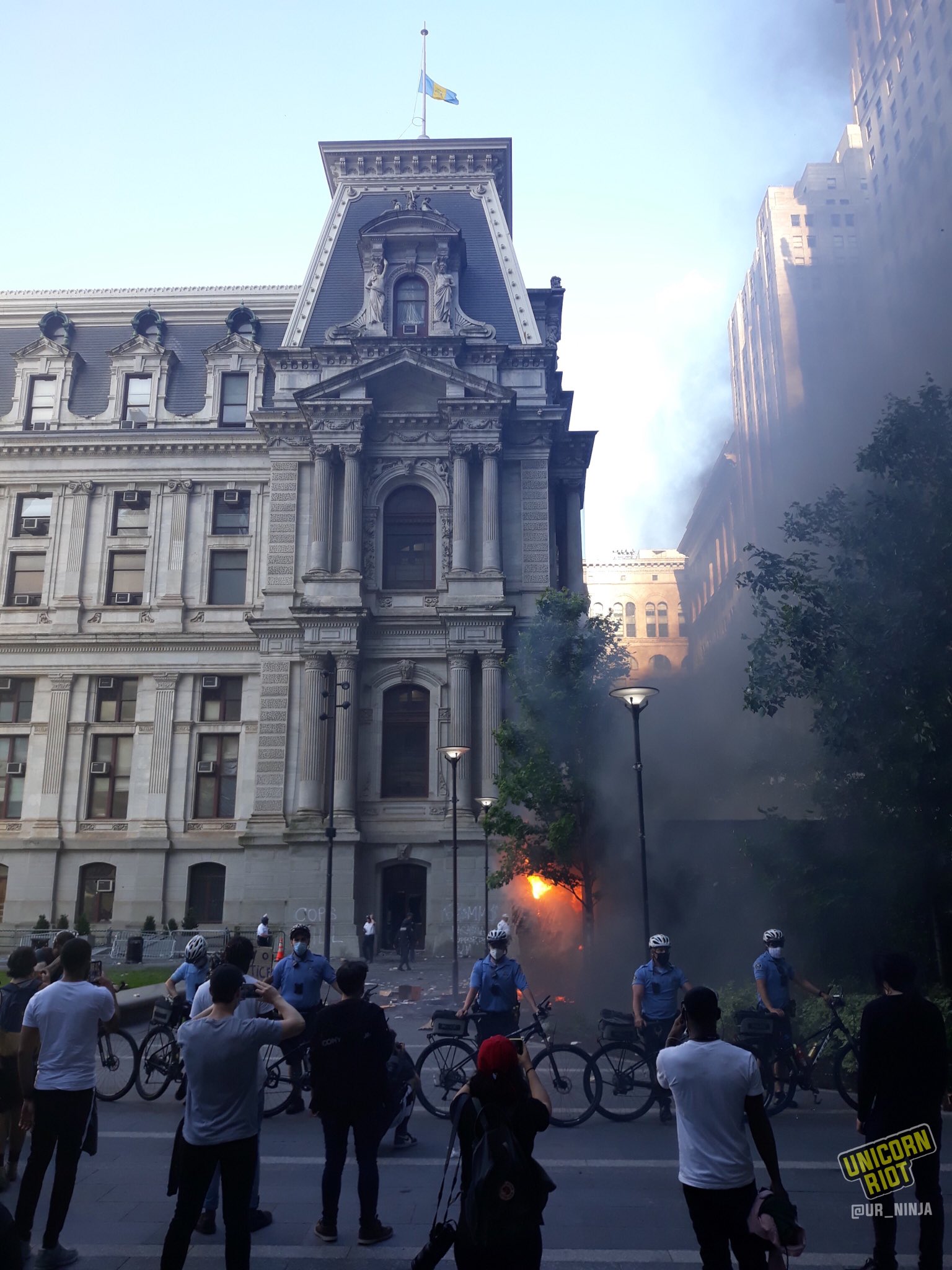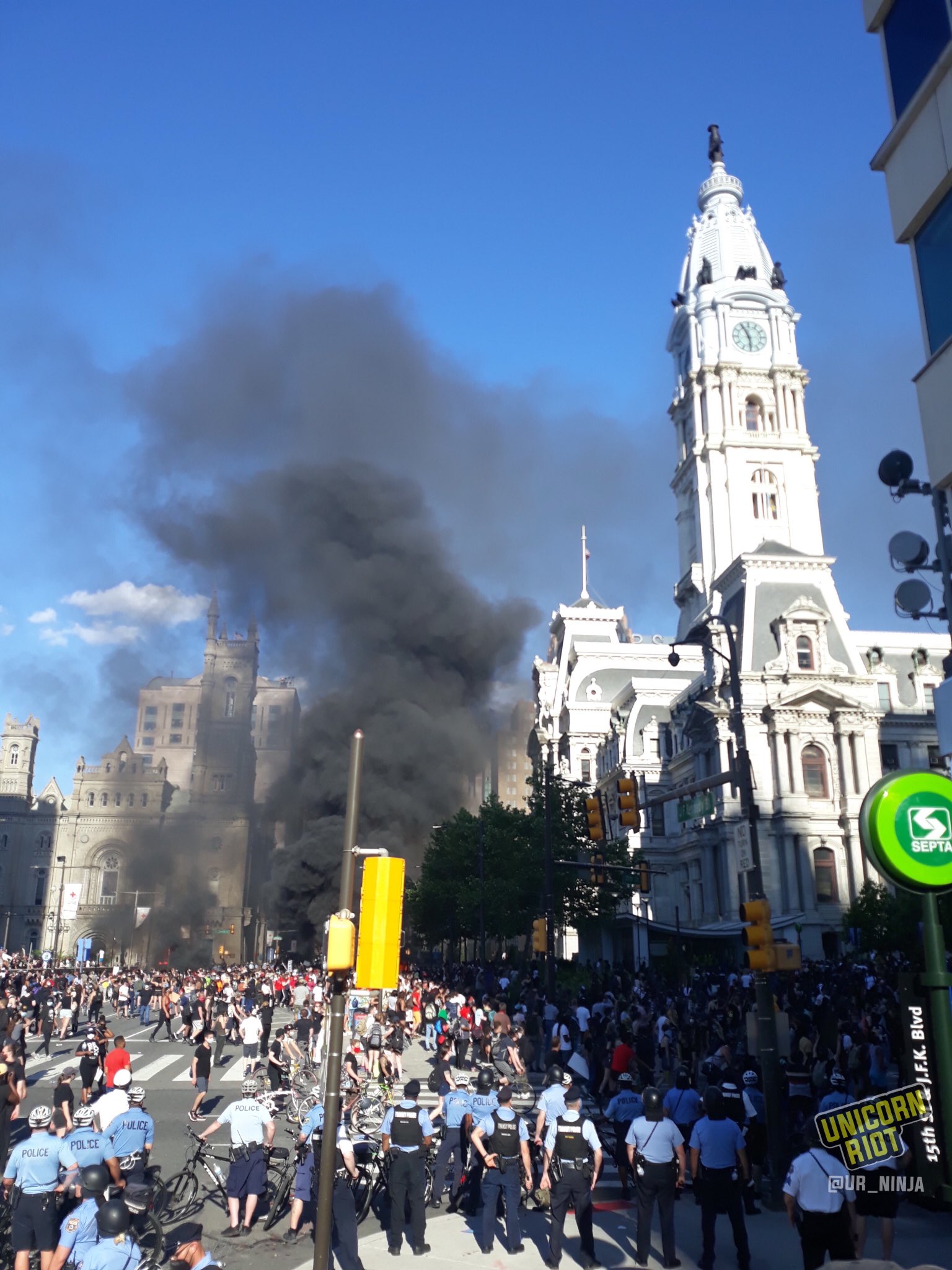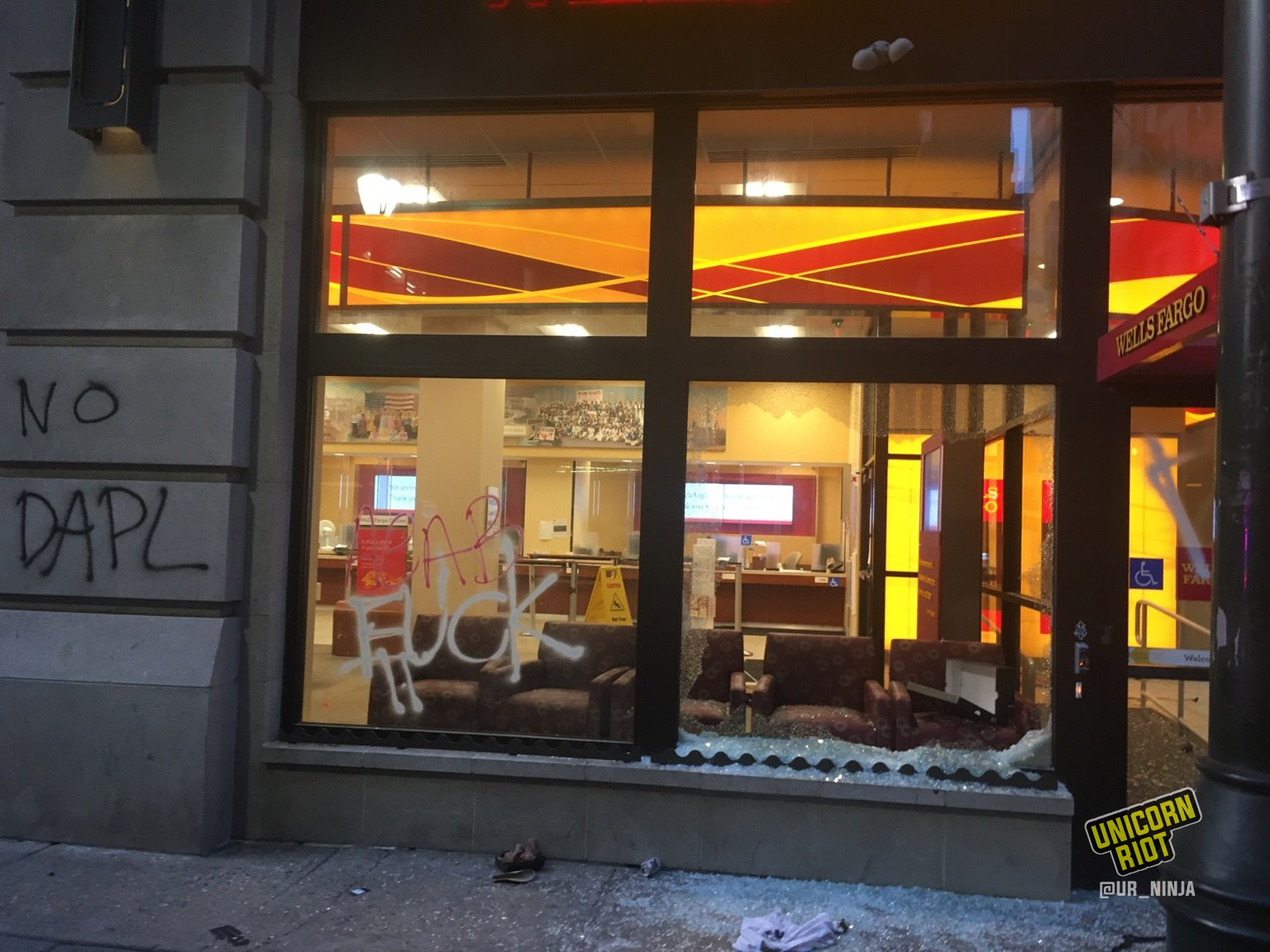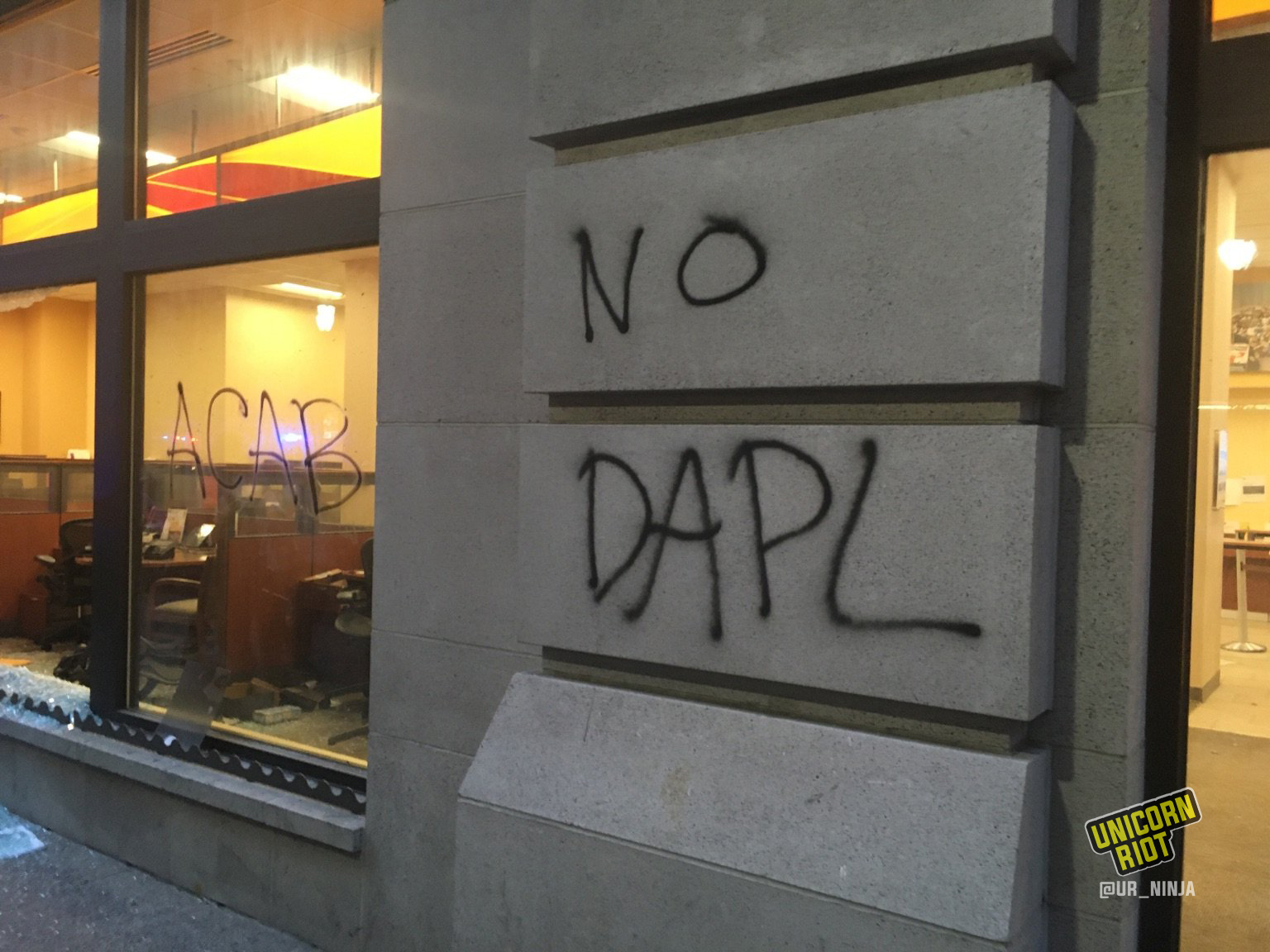from It’s Going Down
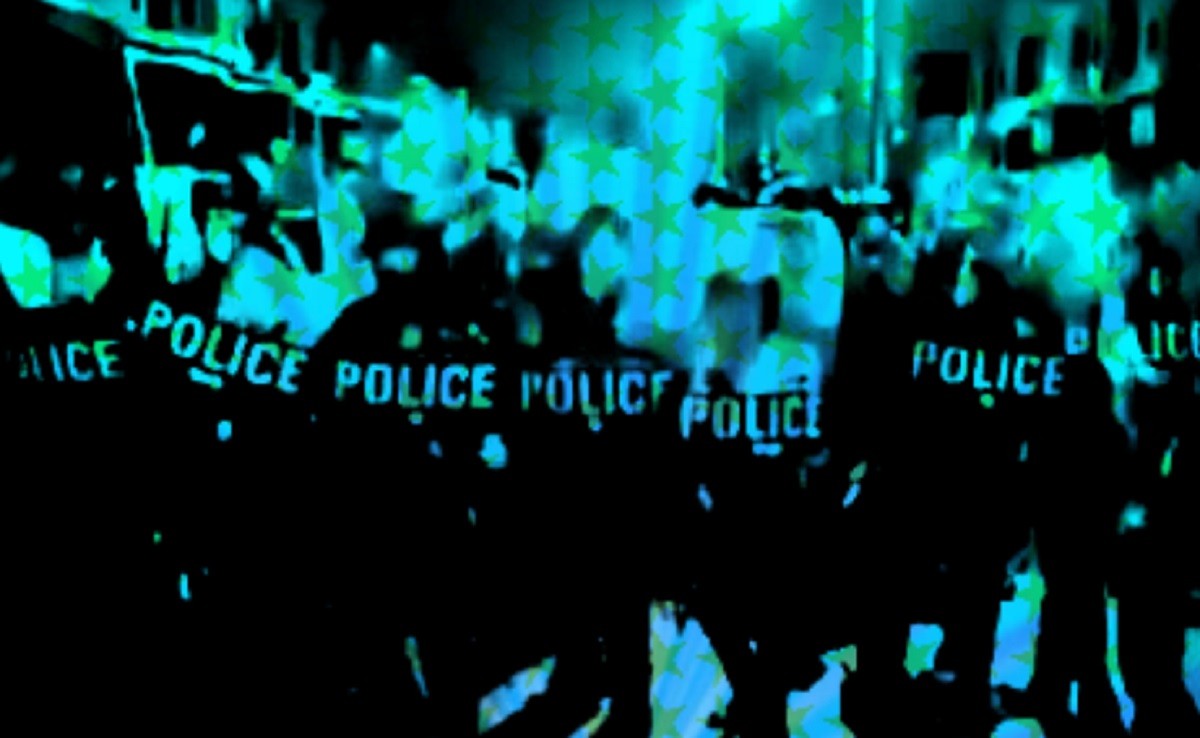
The following analysis and reflection looks at the recent rebellion in Philadelphia following the police murder of Walter Wallace Jr.
by Gilets Jawns
Nearly every week over the course of this long, hot summer, a different city has occupied the center stage of this particularly American drama. Through this passing of the torch, the sequence of riots had has dragged on far longer than anyone could have expected. In the last days before the election, in perhaps the most significant swing state, in the Philadelphia’s turn to carry the torch.
Following the climatic violence of Kenosha, each subsequent riot has been less able to capture the public imaginary or mobilize wide layers of society. It is too soon to tell whether the spectacle of the election will tower over the spectacle of insurrection; if this summer of unrest has finally run its course, or if black proletarians will continue to carry forward the struggle on their own. The riots in Philadelphia none the less leave us with a set of questions about the composition and tactics of movement, and the role of pro-revolutionaries within it.
I.
On Monday, October 26th, Walter Wallace Jr., a father and aspiring rapper with a history of mental illness, was having a crisis and acting erratically. His family called 911, hoping to have him temporarily hospitalized. Soon the Philadelphia Police Department was on the scene, rather than ambulance they had expected. Officers on the scene were told by his family that Wallace was having a mental health crisis. Nonetheless, within minutes, Wallace had been shot at over a dozen times. He died soon afterwards in the hospital. Shakey footage of the incident, captured on a cellphone, ends with family members confronting and screaming at the police officers on the scene. Everybody knew it was about to explode.
As the video begins to circulate on social media, a demonstration is called for that evening at Malcolm X Park in West Philadelphia, not far from the site of the shooting. Several hundred people join a rowdy march from the park to the nearby 18th Precinct, then through the neighborhood, and eventually back to precinct. One section of the crowd breaks away to march on the University of Pennsylvania’s campus police station, breaking it’s windows.
On the blocks cleared from the police, fireworks are set off and the crowd begins looting. Most of the storefronts on that stretch of 52nd Street, occupied by small, black owned businesses, such as bookstores and beauty salons, remain untouched.
Clashes breakout at the 18th Precinct between between demonstrators and riot police and the crowd spills over onto 52nd street, the commercial strip in that part of the neighborhood, where a police car is set on fire and another one has its windows broken. Dumpsters are dragging into the street and also set on fire. On the blocks cleared from the police, fireworks are set off and the crowd begins looting. Most of the storefronts on that stretch of 52nd Street, occupied by small, black owned businesses, such as bookstores and beauty salons, remain untouched. When riot police eventually charged the crowd, people took off running down side streets, jumped into cars, and disappeared. Looting soon broke out all over the city, as groups drove around breaking into pharmacies, liquor stores, and chain stores.
In West Philadelphia meanwhile things began to take on the form of a classic community riot. A crowd fought back the police with bricks and bottles until they retreated. In the space opened up, a stretch of several blocks, much of the neighborhood was out in the streets or on their porches. Young people broke up bricks on the sidewalk, in anticipation of another battle with the police. Others drank, debated, enthusiastically greeted their neighbors, shared looted goods, and cheered on the youth as they fought with or ran from the police. Everyone shared in the revelry of the moment, even if they didn’t partake in, or even criticized, the pot-latch of destruction.
Older drunk men took on the roll of town crier, walking from block to block enthusiastically shouting the news from elsewhere in the neighborhood: what intersections were being looted; where groups were headed now.
The doors of pharmacies and bodegas were broken in. People calmly walked in and out, taking what they needed. “Is there any kid’s cereal left? If you don’t have kids, you might not know this, but that shit is expensive.” A whole range of people from the neighborhood walked the streets with trash bags with stolen goods slung over their shoulders. Older drunk men took on the roll of town crier, walking from block to block enthusiastically shouting the news from elsewhere in the neighborhood: what intersections were being looted, where groups were headed now.
When riot police inevitably tried to retake the block, most of the crowd, most either went back inside their homes, or ran down the street to their cars. A pattern emerged for the rest of the night: someone would yell out an intersection in the neighborhood, crews would drive there, regroup, and begin looting until enough police arrived that it was time to disperse and regroup at another intersection.
Tuesday, October 27th
The next morning it was announced that the National Guard would be arriving within the next 24 to 48 hours. The riot thus had a window of time to make the most of. A flier circulated for another demonstration at Malcolm X Park that evening. In an almost comically exaggerated form of what the movement has come to call swooping, the Party for Socialism and Liberation (PSL), a Stalinist sect, circulated a separate call for a march at exact same location, only an hour earlier. This confusion led to the crowd splitting, with some following the PSL towards Center City and others marching towards the 18th Precinct. The group gathered at the precinct steadily over the course of the evening to around 400 people, a significantly larger and more diverse crowd than the previous night.
In the meantime, a caravan of cars descended on a WalMart in Port Richmond, on the northern end of the city. Video footage from a news helicopter showed people running out of the store with flat-screen TVs and other home appliances into a parking lot densely packed with idling cars. PPD speculated that up to 200 people were inside the WalMart at once, and the caravan may have involved up to 1,000 people. For the next few hours, hundreds of people in dozens of cars marauded through Aramingo avenue, looting a Footlocker, furniture stores, kid’s clothing stores, and other box stores along the way. WalMart announced later that week that, due to the threat of continued social unrest, they would be taking guns and ammunition off of their shop floors.
When the crowd at the Precinct began to march, some people almost immediately began to build barricades and throw bottles at the police. Soon a group of riot police were being chased under volleys of bricks and bottles nearly back to the precinct. Most of the march though tried to steer clear of the street-fighting, but was nonetheless overwhelmed by the sheer size of the police presence. Along 52nd Street the march was cut off and then broken up, with much of the crowd either kettled, dispersed, or stuck in a stand off with riot police. Eventually two or three smaller marches criss-crossed the neighborhood. One of these groups marched away from the heavily-policed zone towards Center City, leaving a trail of burning barricades and a looted liquor store in it’s wake.
Around midnight, with the streets largely evacuated of activists, youth from the neighborhood began to gather around 52nd street. They hurled bricks at the line of riot police and set dumpsters on fire in the street until police eventually charged at them. They then led the police on a chase for the rest of the night, stopping occasionally to break up bricks and wait for their enemy to get within striking range, throwing as many as they could, and then running again.
At the head of the march, improvising the route, was a twenty-something-year-old in a wheelchair dressed in black bloc. Everyone behind him was carrying bricks. Improvised barricades were occasionally dragged into the street and burned. An ATM was set on fire, as well as several vehicles, including an Xfinity van. “That’s for cutting off my wifi, bitch!” The whole proceedings had a festive air to it. Almost everyone knew each other from the neighborhood and would crack jokes on each other as they went. A solidarity demonstration that night in downtown Brooklyn threw bricks at the police, broke the windows of a police car, a court building, and numerous businesses.
Wednesday, October 28th
The next morning, the FBI arrested four people, including a prominent community organizer, who are being charged with arson and accused of having a role in setting three police cars on fire during the uprising in May and June. The FBI made similar arrests and raids in Atlanta that week.
A curfew was declared for 9PM. No demonstration was called for that evening.
As soon as the sun set, looting started spreading all over the city.
That evening, a small crowd gathered outside of the 18th Precinct, composed of more journalists than protests. After being warned by community affairs officers that the gathering was illegal, most of the crowd went home. For the rest of the night, youth from the neighborhood sporadically clashed with the police and set off fireworks across West Philadelphia.
After being warned about the curfew by community affairs officers, most of the crowd dispersed. Throughout the night, small groups of people, mostly from the neighborhood, clashed with police and set off fireworks across West Philadelphia.
Along City Avenue in Merion Park, a caravan of looters ransacked strip malls and box stores. Groups of between three and a dozen cars swarmed the area, storming businesses, and then stopping at gas stations to regroup and discuss their next move. At times the swarm of looters was so dense that there traffic jams along the highway.
Dispersed looting continued for the next several days, as did the occasional daytime activists demonstration, but neither found a way to pick up momentum or relate to each other. Several days of bad weather didn’t help. This was perhaps the first time since rioting began this summer where a curfew was declared for a city and large crowds didn’t come out to challenge it. The national guard finally arrived on Friday, too late to prevent any of the rioting.
///
II.
Innovation
To stay dynamic and overcome the impasses they face, movements need to constantly innovate the tactics they use. In many cities, including Philadelphia as the large-scale riots and social looting of late May ran their course, the unrest was kept going through a turn to diffuse looting. Rather than struggling with police over a particular territory, groups spanned out by car throughout the entire city and surrounding suburbs. This often happened on such a large scale that it was nearly impossible for the police to contain it. Diffuse looting has reemerged sporadically in recent months, during the unrest in Louisville and Philadelphia, as a way to disrupt the city in the absence of large-scale protests.
Philadelphia’s unique tactical innovation has been the introduction of so-called “ATM bombings.” Groups will detonate small explosive devices at an ATM and, ostensibly, walk away with the cash. During the heady days of May and early June, the sound of explosions became part of the background ambiance of the city where American democracy was born. This tactic reemerged during late October’s unrest. There were likely a dozen ATM bombings each of the three major nights of unrest. This tactic has so far not spread elsewhere, likely due to the amount of technical knowledge required.
The fact that innovations, like the caravan, tend to leap from city to city indicates that proletarians are paying attention to how the struggle is unfolding elsewhere. It also shows that the choice of tactics isn’t arbitrary, but it is grounded in an intelligent read of the situation they find themselves struggling within.
The major innovation this summer has it’s origins in Chicago. After police shot Latrell Allen on Chicago’s Southside, a caravan of looters poured into the downtown Magnificent Mile, Chicago’s most famous shopping district,breaking windows and emptying out luxury stores. For the next few hours, this caravan marauded through the city, evading the police and looting luxury boutiques, pharmacies, and liquor stores. This tactical was repeated on a smaller scale in Louisville in September and on a perhaps larger scale in Philadelphia.
The looter caravans, in particular, highlight a much higher degree of coordination, organization, and boldness of action than is within reach of any activist, leftist, or revolutionary group. The fact that innovations, like the caravan, tend to leap from city to city indicates that proletarians are paying attention to how the struggle is unfolding elsewhere. It also shows that the choice of tactics isn’t arbitrary, but it is grounded in an intelligent read of the situation they find themselves struggling within.
These innovative tactics have so far allowed comparatively small groups to overwhelm police departments and disrupt the flows of the city. But there are clear limits to how much these high-risk actions might generalize. They, in fact, seem premised on the boldest layers of proletariat acting alone. This perhaps indicates that black proletarians no longer expect the large, multiracial crowds that joined them in the rebellion earlier this summer.
Composition
These recent nights in Philadelphia pose a challenge to the hypothesis that this is a multiracial uprising. Or rather, they seem to indicate that the “rigid lines of separation” that appeared to break down in May are quickly re-emerging. Throughout the country, the crowds that flooded the streets in May and June closely corresponded to the demographics of the city they were in. White people, in fact, were often over represented compared to their share of the total population of the given city. It was only during some of the most intense moments of looting that the participants were mostly black, but never exclusively so. The riots and demonstrations were also rarely confined to particular black or working class neighborhoods, but rather tended to envelope the entire city.
Instead, during the recent riots in Philadelphia, black proletarians stood largely alone. When multiracial crowds arrived in West Philadelphia in October, they were largely unable to overcome the separations that had been so easily dissolved earlier in the summer. If these activists had hoped to express their support for the rioting, they had the perhaps unintended inverse effect of stifling it, as black proletarians in the crowd hesitated to see how these newcomers might act. For moments on Monday and Tuesday night, a multiracial crowd worked together to build barricades and attack the police. But more often than not, even when different elements of the crowd took part in the rioting, they did so separately. Each night by midnight, almost no one was left on the streets that wasn’t black.
A certain amount of hesitation around whether or how to act in the streets likely result from anxiety around these “rigid lines of separation.” Debates abounded in the streets, on Telegram channels, and within activists circles about the proper way to relate to the black struggle. It is worth remembering though that this anxiety is often only one-sided. People from outside of the neighborhood who showed up for the riots were at times treated with suspicion until they made clear that they were there for the same reasons as everyone else. Then they were widely embraced. Those taking initiate in the streets were glad that others had joined them, especially if they had something to contribute.
It is not simply that separations reasserted themselves within and between the crowds. The riot did not spread from neighborhood to neighborhood, and only a minority of the immediate neighborhood ever participated in a significant way. No wider layers of the class ever came into the streets, and the activist crowd that mobilized never exceeded a few hundred people. Solidarity demonstrations, with the exception of the one in Brooklyn, were small and attended only by committed activists.
What Are We to Do?
If there is to be a collective leap from riot to insurrection, for this long, hot season stretch into an endless summer, people will need to find ways to contribute to this unfolding. Rather than being paralyzed by anxiety, pro-revolutionaries should consider what practical knowledge and capacities they have to offer.
This is often quite simple. One way in which pro-revolutionaries make themselves useful is by holding onto the memory of lessons learned in previous struggles and experiments. This can be as basic as reminding people to wear masks or showing them how to use Telegram to out smart the police. There are certain gestures, such as circulating a call for a demonstration, that can be necessary to keep things moving forward.
The balance sheet on this is fairly clear in hindsight. Despite their awkwardness, the two evening demonstrations spilled over into riots, while the other nights only saw more diffuse actions. This is because they provide a space for those who want to take initiative to find each other and for those who may not want to take initiative, but who nonetheless support the riots, to express that publicly in a way that provides cover for others. The evening demonstrations also provided cover for the looting happening elsewhere, by occupying much of the city’s police force along 52nd Street.
With the declaration of a curfew and the threat of the national guard, providing some basic container to act within, such as calling for another evening demonstration, could have created the conditions for the unrest to keep going for a few days longer. In this sense, a small intervention by pro-revolutionaries could have been significant.
Otherwise, pro-revolutionaries try to read what the dynamic of a given struggle is, and how to contribute to its unfolding. This can look like trying to take initiative in a way that may resonate and be taken up by other members of the crowd. Even if we may stand out from the crowd, when the gestures we take prove themselves to be sensible, people tend to recognize them as material contributions. Other times, simply having the foresight to bring tools, whether masks, fireworks, umbrellas, or a sound-system, can go a long way towards contributing to the dynamic of an event.
This point may seem banal, but it’s worth remembering. After the first days of the uprising in New York City, much bigger crowds began to come into the streets. In these moments, the rigid separations between different components of the crowd could be felt. Many of the new participants were inspired by the bolder acts of the uprising, but in person were as afraid of the specter of the riot as they were of the police. They desperately looked for people to appoint into leadership roles, who then tried their best to micromanage the demonstrations. Young black proletarians in the crowd began to sense their isolation, and, by the the end of the first week, stopped coming out. If others in the crowd had also tried to take initiative, it’s possible they could have contributed to a circumstance where the black avant-garde didn’t feel constrained, perhaps extending the uprising a bit longer.
In this sense, solidarity literally means attack. The more pro-revolutionaries have felt the confidence to act, they more they been able to meaningfully contribute to unfolding of this struggle set in motion by black proletarians.
These leaps forward in proletarian self-organization and tactics over this long summer present pro-revolutionaries with a particular dilemma. The role of pro-revolutionaries has been to contribute to the intensification and generalization of struggle, to push them towards their insurrectionary horizon. But when proletarian self-activity becomes much more daring and risky than many pro-revolutionaries are ready for, what then becomes our role? When these tactics already entail such a degree of coordination and intensity, then even if pro-revolutionaries are to participate, it is not clear what we have to contribute.
Some black proletarians seems committed to carrying the struggle forward and intensifying it, but unlike in May, they are almost totally isolated. To be able to struggle at all, they have thus had to be immensely creative in their choice of tactics. But these innovations seems to presuppose their isolation. This riddle may solve itself as struggles once again generalize and new tactics proliferate. The black avant-garde may continue to blaze ahead on its own, struggling with an intensity that many cannot participate in, and it will be important for revolutionaries to decide how to contribute.
The election is now in the rear view mirror. While the dust has not yet settled, it may turn out to the case that the left’s fascination with the possibility of a coup or civil-war only obscured from us the more difficult questions raised by this moment. The black avant-garde may continue to blaze ahead on its own, struggling with an intensity that many cannot participate in. We may be faced with the option of either joining them on this path, with neither a clear horizon or sense of how we can contribute, or of vacating the streets ourselves. This riddle may solve itself as struggles once again generalize and new tactics proliferate, but we cannot take that for granted.


/cloudfront-us-east-1.images.arcpublishing.com/pmn/7DOPKSEKHJDN5P3LIFZQL5KVKM.jpg)
/cloudfront-us-east-1.images.arcpublishing.com/pmn/LHK76PFZ3ZFIZNVH6JIWIHSW6A.jpg)
/cloudfront-us-east-1.images.arcpublishing.com/pmn/ZWULAZBSONB75EEUEQTPAB6LUA.jpg)
